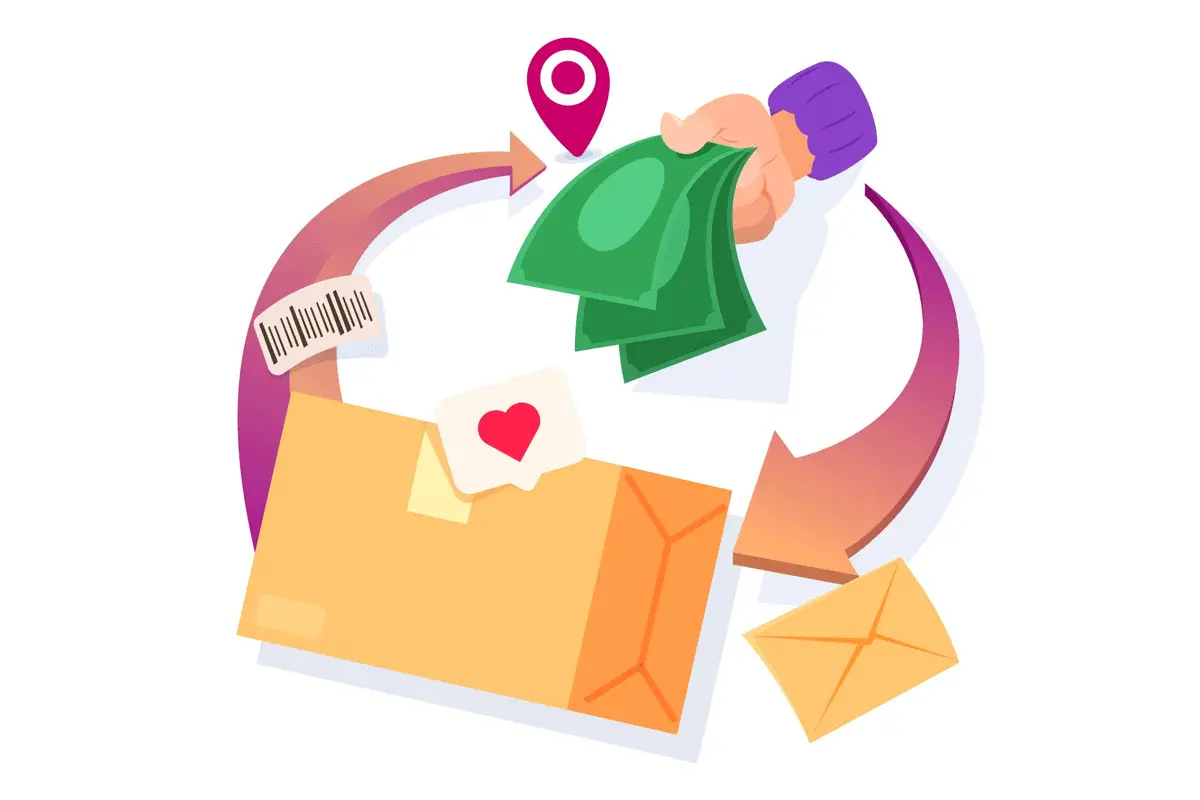Email marketing is a powerful tool for driving sales and building relationships in e-commerce. When done right, email marketing for e-commerce can yield a return on investment of up to 3,900%, making it essential for your digital marketing strategy. By reaching customers directly in their inbox, you can share promotions, updates, and personalized content that resonates with them.
Understanding how to effectively engage your audience through email will elevate your e-commerce efforts and boost your sales. As you explore this blog post, you’ll discover tips and strategies to enhance your email marketing approach.
Understanding Email Marketing in E-Commerce
Email marketing is a powerful tool in e-commerce, allowing you to reach your audience directly. By building subscriber lists and running targeted campaigns, you can enhance sales and maximize your return on investment (ROI).
Core Concepts of Email Marketing
At its core, email marketing involves sending messages to your subscribers. These messages can include promotions, updates, or valuable content that resonates with your audience.
Key components to focus on:
- Email Campaigns: Planned series of emails designed to achieve specific goals.
- Segmentation: Dividing your audience into groups for tailored messaging.
- Personalization: Customizing content based on user behavior and preferences.
Using tools for email design and analytics will help you track your success. Analyze open rates, click-through rates, and conversions to refine your strategies.
The Importance of Email Marketing for E-Commerce
Email marketing is vital for driving sales in your online store. It enables direct communication with your subscribers, fostering loyalty and trust.
Benefits include:
- Higher ROI: Email campaigns often yield a higher return compared to other marketing channels.
- Customer Engagement: Regular contact keeps your audience engaged with your brand.
- Sales Boost: Promotional emails can prompt immediate purchases, especially with limited-time offers.
To make the most of your email marketing efforts, focus on creating compelling content. Use clear calls to action and ensure your emails are mobile-friendly to reach more subscribers effectively.
Building and Segmenting Your Email List
Creating and maintaining an effective email list is crucial for your e-commerce success. You need to focus on building a solid subscriber base first, followed by utilizing effective segmentation strategies to engage those subscribers.
Creating a Subscriber Base
To start building your email list, you need to attract subscribers. Offer value in exchange for their email addresses. This can be through discounts, exclusive content, or free resources. Make sure your signup forms are easy to find on your website and social media.
- Use pop-ups wisely: Timing is important. Display them after a few seconds or upon exit intent.
- Leverage social media: Promote your email list on platforms where your audience spends time.
- Run contests or giveaways: These can encourage more sign-ups.
Ensure you comply with laws regarding email marketing, like obtaining consent. This foundation sets you up for successful email marketing.
Effective Segmentation Strategies
Once you have a subscriber base, it’s important to segment your email list. Segmentation helps you tailor content to meet the specific interests of your subscribers. This increases engagement and conversion rates.
Consider these strategies for effective segmentation:
- Demographic data: Segment based on age, location, or gender to target specific groups.
- Purchase history: Create segments based on past purchases to send relevant product recommendations.
- Engagement levels: Identify subscribers who engage regularly versus those who don’t. Tailor your messaging accordingly.
By dividing your list into segments, you can send personalized campaigns that resonate with your audience. This approach can lead to higher open and click-through rates.
Crafting Compelling Emails
Creating effective emails is key to engaging readers and driving action. You need to focus on both the content design and the attention-grabbing nature of your subject lines to ensure success in your e-commerce email marketing.
Designing Engaging Email Content
Start with a clean, visually appealing layout. Break up text using short paragraphs, bullet points, and images. This makes it easier for readers to digest information quickly. You can use email templates that suit your brand identity.
Personalization enhances the customer experience. Address the recipient by their name and tailor content based on their preferences. For instance, if they browsed a specific product, suggest similar items.
Ensure that your messages are clear and actionable. Use bold buttons for calls to action, like “Shop Now” or “Learn More.” Emphasizing benefits, such as discounts or exclusive offers, can also motivate readers.
The Art of the Subject Line
The subject line is your first chance to attract attention. A compelling subject line can greatly increase open rates. Aim for clarity and curiosity. For example, instead of “New Products,” try “Discover the Latest Must-Haves!”
Keep it short, ideally under 50 characters, so it displays well on mobile devices. Testing different styles is effective. You could use one subject line for promotional emails and another for transactional emails.
Using emojis can catch the reader’s eye, but use them sparingly. Make sure they match your brand voice. Lastly, consider using A/B testing to analyze which subject lines resonate more with your audience. This can significantly boost your email campaign performance.
Maximizing Conversion through Automation and Personalization
In e-commerce, applying automation and personalization in your email marketing can significantly boost your conversion rates. By using advanced tools and techniques, you can create targeted campaigns that resonate with your audience and drive sales.
Leveraging Email Automation Tools
Email automation tools are essential for streamlining your marketing efforts. These tools allow you to set up automated workflows that send emails based on customer behavior.
When a customer makes a purchase, you can trigger a thank-you email followed by a review request. Additionally, abandoned cart emails can remind customers of items they left behind, encouraging them to complete their purchase.
Key benefits of email automation include:
- Timeliness: Send emails at optimal moments.
- Consistency: Maintain a regular communication schedule.
- Efficiency: Save time while reaching more customers.
Using automation leads to higher engagement and conversion rates, as timely communication meets customer needs effectively.
Personalization Techniques to Improve Engagement
Personalization is crucial in making your emails relevant to each recipient. It goes beyond using the customer’s name; it includes tailored content that reflects their preferences and behaviors.
Techniques to enhance personalization include:
- Segmenting your audience: Group customers based on purchase history or behavior.
- Dynamic content: Show different products or messages based on user data.
- Behavior-triggered emails: Send targeted messages after specific actions, such as browsing a product or making a purchase.
By applying these strategies, you create personalized messages that resonate deeply. This approach leads to increased opening and click-through rates, ultimately maximizing conversions in your e-commerce email marketing efforts.
Measuring Success and Optimizing Performance
To effectively measure success in email marketing for e-commerce, you will need to focus on key metrics and use A/B testing. These methods will help you understand performance and enhance your email campaigns for better results.
Key Metrics and Their Interpretations
Monitoring specific metrics is crucial for evaluating the success of your email marketing efforts. Here are some important metrics to consider:
Open Rate: This shows the percentage of people who opened your email. A higher open rate indicates effective subject lines.
Click-Through Rate (CTR): This measures the percentage of recipients who clicked on links within your email. A strong CTR indicates engaging content.
Bounce Rate: This tells you the percentage of emails that were not delivered. A high bounce rate can affect your sender reputation.
Conversion Rate: This measures the percentage of recipients who completed a desired action, like making a purchase. High conversion rates reflect effective email campaigns.
Reviewing these metrics regularly through your email marketing platform’s reports will help you adjust strategies as needed.
A/B Testing for Enhanced Email Campaigns
A/B testing, or split testing, allows you to compare two versions of an email to see which performs better. This method helps refine your approach and boost performance.
Consider testing different elements, such as:
Subject Lines: Try different wording, length, or personalization to see what resonates best.
Call-to-Action (CTA): Experiment with wording and placement. Clear CTAs can lead to higher click rates.
Email Layout: Test variations in design to determine which layout keeps readers engaged longer.
To conduct an A/B test effectively, send two versions to a small sample of your audience first. Monitor the results before rolling out the winning version to your entire list. This process can lead to significant improvements in metrics like open rates and conversion rates, ensuring your emails are more effective.
Adhering to Best Practices and Legal Guidelines
To be successful in email marketing for e-commerce, it’s crucial to engage your subscribers meaningfully while also complying with legal standards. Following best practices can enhance your email deliverability, reduce spam complaints, and maintain a healthy unsubscribe rate.
Engaging Subscribers Without Being Intrusive
Building a strong relationship with your subscribers is important. Start by using engaging subject lines that clearly reflect the content of your emails. This helps improve open rates.
Offer value through personalized content, product recommendations, and exclusive promotions. Use segmentation to send targeted emails based on browsing history or previous purchases.
Keep your emails clear and concise, and avoid overwhelming your subscribers with too much information. A well-structured layout with bullet points and visual elements can enhance readability. Make it easy for readers to act by including clear calls to action (CTAs) that direct them to your website.
Consider the timing and frequency of your emails. Find a balance that keeps your brand top-of-mind without being seen as spam. Frequent communications can lead to higher unsubscribe rates.
Compliance with Email Regulations
Understanding and adhering to email regulations is essential in your marketing efforts. Familiarize yourself with the CAN-SPAM Act and other relevant laws. This legislation requires that you include your physical address and an easy way for recipients to opt out of future communications.
Always obtain explicit consent before adding someone to your email list. This can be done through opt-in forms, where subscribers agree to receive your emails. Verify that your forms are easy to find on your website.
Maintaining your email list is just as important. Regularly cleaning your list helps improve email deliverability and reduces the chances of your emails being marked as spam. Monitor your unsubscribe rate and address any issues that may be causing subscribers to disengage.
By following these best practices and legal guidelines, you create a positive experience for your subscribers while protecting your business.

SEO Chatter is dedicated to teaching the fundamentals of search engine marketing to help marketers understand how to increase organic website traffic and improve search engine rankings.

